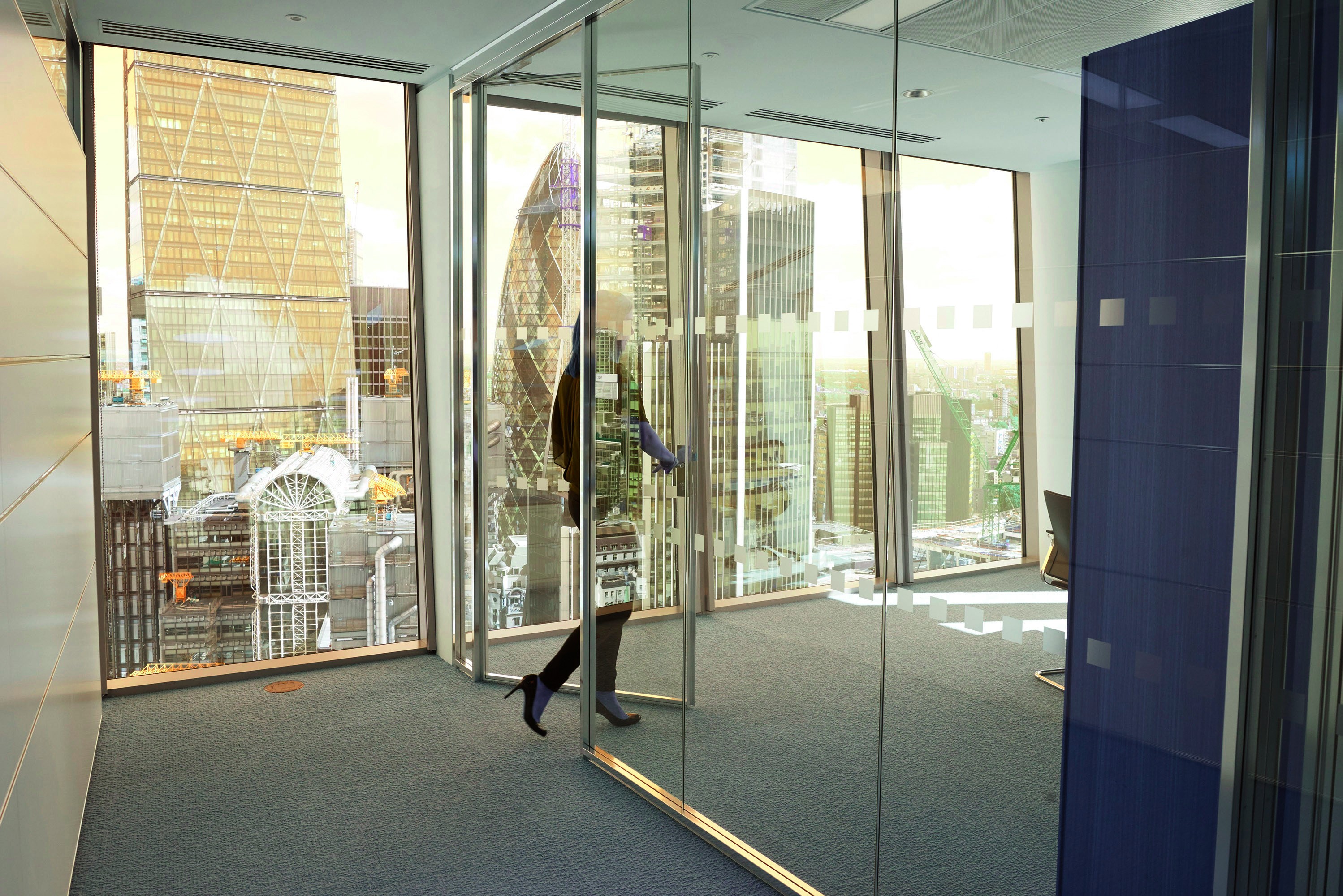The recruitment process is geared towards creating a long-term fit, from both the firm’s and the candidate’s point of view.
It’s hard to know what to believe these days. Claims of ‘fake news’ echo around the corridors of power, opinion polls offer misleading projections and spurious financial statements even decorate the sides of buses. TV stars and pop singers aren’t to be trusted with their tax returns and apparently some adverts don’t always tell the whole truth; it’s even been mooted that there are members of the legal profession who can (and sometimes do) apply the facts in rather creative ways (perish the thought).
We really wanted to create a training contract that would allow trainees to feel they were not actually trainees but junior lawyers from day one
It’s refreshing, therefore, to discover that one of the overarching principles of the recruitment process at Vinson & Elkins (V&E) is to provide potential future lawyers with a full and honest impression of what life would be like should they be offered a place at the firm. While the vacation placement gives participants the chance to get stuck in to real work and impress from day one, the training contract is specifically designed to allow trainees to see cases and transactions through to completion.

“We really wanted to create a training contract that would allow trainees to feel they were not actually trainees but junior lawyers from day one – to have that feeling of responsibility and really being part of the team,” explains Mark Beeley, who was the firm’s first London trainee, the architect of the current training programme and V&E’s current training principal. “A pretty integral part of that was the idea of keeping them on a case or deal from the day they arrived through to that case or deal concluding.”
This is achieved through an unusual, non-rotational training contract. Although trainees will sit in several different practice areas during their two years, they are encouraged to accept work from any number of the firm’s departments. Crucially they do not leave matters they are working on behind when they move; this allows them to see those matters develop and, in the process, gain an understanding of the way more senior lawyers handle complex issues.
“When I first started at V&E, I was sitting in energy transactions and projects and got involved in a particular matter,” recalls Lucy Preston, a second-year trainee. “I’m still working on it now, more than 18 months later and it’s been very interesting. When you work on a case long-term, for example, you see partners make decisions and often you wonder at the time why those decisions were made. It’s only later, when you see the full picture as the case develops that you come to understand their reasons. It’s difficult to understand things in a vacuum. The more experience you have of working through the whole process, the more you understand the decisions that are made, you can react more quickly and engage with matters more. It’s been really beneficial, in fact, invaluable for me.”
Of course, the process doesn’t only favour the trainees, it also helps the firm to ensure it gets the maximum return for its efforts – especially given the relatively small size of this century-old US firm’s London office. “We don’t take many trainees on and we really invest in those that do come here,” claims Sarah Stockley, previously a V&E trainee and senior associate, and now a member of the graduate recruitment team. “That is not just financially, but in all aspects of their training. The ideal result is for them to remain with the firm: to become associates and then make partner. We want to start that process very early on – so, we say: ‘this is what we’re like, warts and all, either you like it or you don’t.’ I think it is far better for us to be honest from the start than for someone to come here and realise that it’s not quite what they thought it was going to be.”
The preferred method for recruitment is via the vacation placement scheme, which – as mentioned above – is also designed to offer an authentic taste of the V&E life and find those who savour it. To obtain a place on the scheme, the first stage is the now ubiquitous online application form. While everyone knows that most applicants apply to multiple firms, Lucy stresses how important it is to avoid generic answers.
We have a very flat hierarchy here so on a daily basis our trainees interact with partners, senior associates, associates, other trainees and support staff
“It is very obvious in an application if you have copied and pasted answers,” she points out. “Conversely, it’s also obvious when you have put a lot of effort into an application. What I found helpful was to sit down and ask myself what I was really looking for in a firm using the Training Contract and Pupillage Handbook, LawCareers.Net and other similar resources. By the time I had that shortlist it was clear that only four or five firms would fit the bill. So I wrote totally bespoke applications for each of them. By the time I did the one for V&E, which was my preferred choice, I was well practised.”
The myriad application forms are whittled down to between 50 and 60 candidates who get invited to attend an interview, conducted by Mark, Sarah and another member of the graduate recruitment team, Emilie Stewart, who is also an associate in the firm’s finance department. At interview, it is helpful to demonstrate that you know the sort of work the firm does and how that fits into the relevant industry markets and the wider business world.

“You don’t need to reach the most polished business conclusions,” suggests Lucy, “but if you can create a starting point for a conversation, it really stays with interviewers. It stands out when we meet the people on open days and vacation schemes that have done their research and have something to say. It’s as if they’re engaging with what you do not just talking about what they want, which is always good.”
The need for engagement is echoed by both Sarah and Mark. “Before the actual interview, candidates are given a problem question and time to prepare an answer, which then forms the beginning of the interview itself,” explains Sarah. “It’s not always getting the answer right that is important, it is how they present it. How they come across when they are talking to us, whether they make eye contact, what they do with their hands, those sorts of things. Obviously, you will get slightly different answers from people who are lawyers and non-lawyers, so we take that into account. If law students have had some experience of contract law, for example, then we will be looking for them to pick up on any relevant points in that area. It’s about them showing their strengths, whatever those strengths may be.”
While Mark agrees, his criteria are often much more related to how he sees the candidate operating as part of a team. “At interview we are looking for a combination of things,” he points out. “Like everyone else we want exceptional academics, but also some evidence of real-world experience. It’s very difficult in half an hour to make an assessment of the person, but – as we all work really long hours, in very close quarters – one of the tests in my head is that if I have to sit next to you on a long haul flight for 14 hours, am I going to want to reach out and strangle you at the end of it? It may be a tough test, but it’s the reality of the process. We can work cases locked in a hotel with a team for two weeks on end – I have to be sure that we are going to function and gel.”
The vacation scheme itself is once again designed to be as much like working for V&E as possible. The work allocation system is the same as that used on the training contract – meaning that work can come from three or four different departments. This gives candidates a sense of what it’s like to juggle different demands and be involved on different things at the same time. Mark is also clear that although there is a social side to the vacation placement, the firm doesn’t overdo things – once again, honesty prevails.
“We don’t do what some US firms in the City do and take them out to the ballet or sports every evening,” he explains. “We just don’t think it’s representative of what real life is like here and we want people to understand that. We feel that, as much as we are testing the candidates, they are also testing us. With a programme of just four trainees every year we can’t afford to get the wrong people and that works both ways – they have to be as comfortable with us as we are with them.
“The vacation scheme is also about making sure that the sense I wasn’t going to hate sharing an office with them after our first half-hour meeting was correct and that they can get on well with a range of people. We have a very flat hierarchy here so on a daily basis our trainees interact with partners, senior associates, associates, other trainees and support staff. We want to make sure that not only are they not going to go to pieces the first time a senior partner talks to them, but also that they are not rude and dismissive to their secretary, and really are going to be a good fit.”
It seems that honesty really is the best policy. Not only has Vinson & Elkins won the LCN Award for Best Recruiter in its category, but for the last few years the firm has also been able to offer all of its trainee solicitors a position at the firm – something of which Lucy is justifiably proud.
“Personally, I love working at V&E. I love the people and I love the work,” she exclaims. “I’ve been offered and have accepted a job at the firm and start in the disputes department in September. In fact, everybody in my year has been offered a role at the firm. They take on the number of trainees they think they can accommodate and the point is that you are training to be an associate at V&E, that is the aim throughout the entire recruitment process: the interview, the vacation scheme, the training contract – they are all quite rigorous processes and those that make it through them are pretty much V&E to the bone.”

Best Recruiter – US Firm in the City
The recruitment process is geared towards creating a long-term fit, from both the firm's and the candidate's point of view.

